Crowded Space
Discover how Lloyd’s helps make space operations safer and more sustainable.
To avoid or dispose of space junk, first you’ve got to be able to locate it. In 1984, when Lloyd’s underwriters initiated the first-ever space salvage operation to capture and retrieve two malfunctioning communication satellites, locating the objects in a then uncrowded sky was relatively easy. A NASA space shuttle mission funded by the Lloyd’s market captured the satellites, which were resold to help recoup insurance losses.
Today, the European Space Agency is tracking over 30,000 items of space debris larger than 10cm in length orbiting Earth. But this is only a fraction of the problem. Estimates suggest there are another 100,000 objects measuring less than 10cm, too small to track. Although tiny, these pieces of debris including flakes of paint could seriously damage spacecraft, according to NASA.
I think that large swaths of space becoming unusable is something that could very well happen in the next few years.
The challenges of pinpointing thousands of fragments in low-Earth orbit are daunting. Lloyd’s space underwriters, all too aware of the threat posed to space vehicles they insure, are keen to contribute positively to the task. So, in March 2022, Privateer, a new data and intelligence platform empowering the future of space sustainability co-founded by former-Apple boss Steve Wozniak, joined the eighth cohort of start-ups in the Lloyd’s Lab – the Lloyd’s market’s ten-week accelerator programme that helps innovative ideas gain traction and success in the insurance market.
Privateer’s mission is to enable sustainable growth for the space sector by cataloguing and processing information about debris so that satellite operators can manoeuvre safely and effectively. Data is collected from a number of satellites and tracking programs including the US Space Command, Planet, JSC Vimpel and SeeSat-L. This data is then fed into the company’s proprietary knowledge graph technology, becoming available to insurers to provide a data-driven picture of the risks posed by debris, which in turn enables effective and innovative underwriting.
Wayfinder is the firm’s first app based on its data set. It is a virtual 3-D globe that allows satellite operators to inspect the layers of constellations, orbits and countries to better understand what’s happening around the Earth. One commentator likened it to ‘Google Maps for space’.

Debris data visualisation. Copyright Privateer
For Privateer, its relationship with Lloyd's Lab has been pivotal in its development. News of the Lab’s outstanding success had spread to the US prompting Andrew Grinalds from Privateer to meet the Lloyd’s team. Excited by the firm’s mission, Lloyd’s encouraged Privateer to apply to join the Lab’s next cohort. From Privateer’s perspective, it was an opportunity to work with underwriters creating space insurance products and satellite operators who fly in low-Earth orbit where less than 3% of satellites are currently insured. The goal: co-created insurance products.
In those 10 weeks with the Lloyd’s Lab, Privateer was able to make real progress. "We discovered some specific risks where policyholders were naked," says Andrew Grinalds. "Our involvement with the Lab allowed us to work with the programme’s mentors to design insurance solutions for these perils."
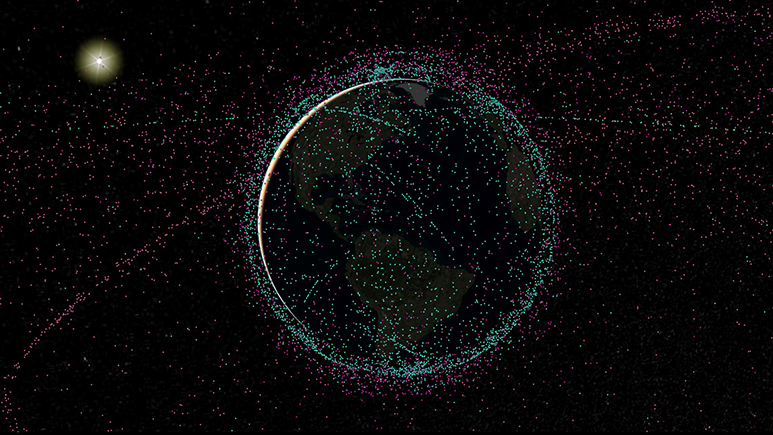
Debris data visualisation. Copyright Privateer
Grinalds and the team also engaged with capital providers looking to finance satellite projects running into hundreds of millions of dollars. “They’re concerned about technical risks like fuel budgets, altitude and inclination-specific collision risks,” explains Grinalds. “Also, repossession and resale protocols for satellite operators who become insolvent. These conversations that began in Lloyd’s Lab have led to an increase of liquidity so companies can add more capability in space.” The availability of insurance is always attractive to capital providers as it reduces their exposure, hence the drive to capture the data that insurers need.
By putting some of their brightest minds to work, Lloyd’s and Privateer are on a journey to make space safer and more accessible for the future.
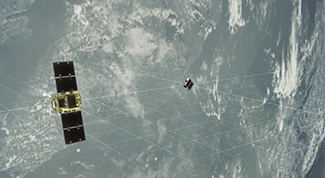
The Lloyd’s market is now providing risk mitigation solutions for the emerging ‘orbital economy’ - helping Astroscale’s new end-of-life satellite retrieval service to get off the ground.
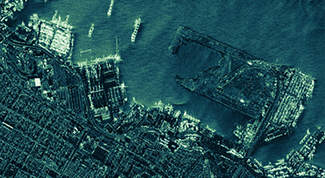
How Lloyd’s Lab alumnus ICEYE’s ‘persistent monitoring’ satellites can help manage and mitigate the impacts of climate change.
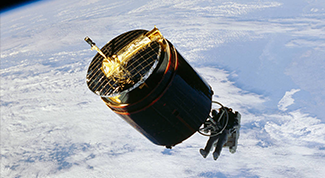
In 1984, Lloyd’s was the driving force behind the first-ever space salvage mission – mission STS 51 - working with NASA and the Discovery shuttle crew to bring two stray satellites back to Earth.
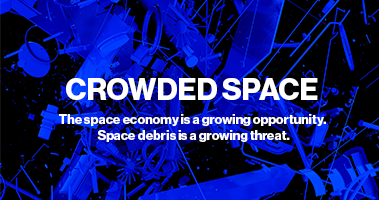
Discover how Lloyd’s helps make space operations safer and more sustainable.